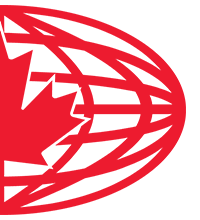I just finished a book called “Turbulence,” which was not very good, but it reminded me of the goings-on in the travel insurance market. The fewer and fewer insurance companies in our marketplace are having great difficulty in predicting their loss ratios and, as expected, their rates are all over the place− but mostly higher.
In January and February of this year, several insurers implemented substantial rate increases of up to 25% in some cases. There are multiple reasons for this, the prime one being that they have had several large claims. Generally, we consider a large claim as being in excess of US$500,000 and, for some travel insurance programs, one or two of these claims would be considered catastrophic. Several insurers purchase reinsurance each year to help offset these high-claim costs. This, of course, adds another layer of already high costs to their product mix and will increase their premium rates. Often, the reinsurance contract will state that claims of more than a certain amount will be shared and/or sometimes even covered fully by the reinsurance company. The “attachment point” is the limit that the primary insurance company has responsibility for paying and is usually $200-250,000 dollars. More than that amount, the reinsurance company must pay, or at least share in the claim payment.
Another factor driving rates up in the early part of this year was, believe it or not, weather. Extremely hot weather can be devastating to people with even minor breathing problems. Compound that with the Red Tide on the Gulf of Mexico and the forest fires in the Western U.S. and breathing was an issue even for very healthy people, me included. Emergency rooms and doctors’ offices were clogged with people seeking some relief.
Did you get your flu shot? I certainly hope so, because it can save your life. Last year, the flu shot effectiveness during the snowbird season was approaching 50%, which is about normal. Very late in the season, a nasty new flu strain appeared and the effectiveness dropped to about 9%. When the flu shot does not work our claims increase dramatically but, fortunately, our snowbirds had mostly returned to Canada by then. Other insurance programs were not so lucky.
The horrible news that the Ontario government was attempting to cancel all OHIP payments outside of Canada came as a shock to us. If they can get away with this, other provinces will follow quickly and premium rates will increase. Our best guess is that the average premium increase for all insurers will be about 7.5%. Medipac’s increase will be in the 4-5% range, based on our low administration costs. Two of the programs increasing premiums the most in January and February have very tight government connections, and I wonder if they had a pre-warning of the government cutbacks. We do too, but we had no idea that this was coming.
NOW for the Good News! Medipac believes that CSA will be successful in convincing the Ford government to back off of this ridiculous cutback. It will prove to be very, very expensive for them in the long run. In fact, we have asked them to increase their out-of-Canada payments to $1,200 per day (in hospital), and we believe that this will save them money. The government was complaining about their high administration costs, so Medipac offered to take over that daunting (to them) task for 70% less than they were paying. Medipac missed the flu shot bullet and the Red Tide just did not show up this year. Claims in the West were down due to several factors, as well. And the good news is…Medipac will NOT be increasing rates for our Early Bird program and our famous 5% discount still applies. Govern yourself accordingly, as they say.
